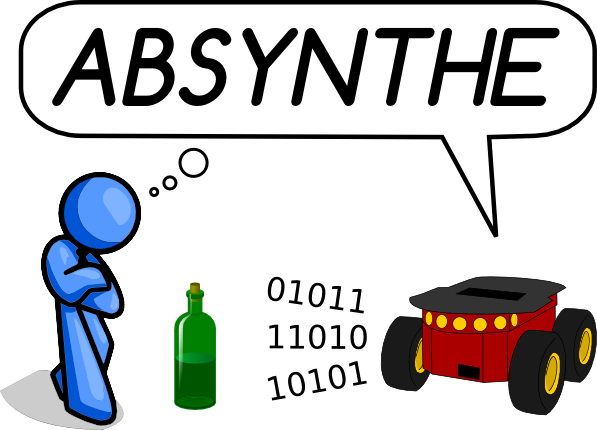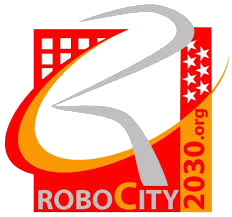Research

My research interests mainly focus on Indoor Localization, WiFi sensors and ADAS for Intelligent Vehicles and Advanced Driver Assistance Systems for Intelligent Transportation systems. The objective of my PhD thesis was the development of a global indoor localization system for mobile robots using Partially Observable Markov Decission Processes with the available information of the signal strength received from the already existing WiFi access points in the environment and the ultrasounds of the robots.
Projects
I have managed and collaborated in more than 30 public funding projects as well as industrial projects in the field of localization, robotics and intelligent transportation systems. Here I show some of the most relevants, but you can view the complete list here.
- Abstraction, Synthesis, and Integration of Information for Social Workflow Analysis (ABS4SOW)
The aim of ABS4SOW project is to provide a software platform to create marketing campaigns based on three main concepts: mobile devices, social networks andgamification. A marketing campaign is modelled as a social workflow that con-sists of a sequence of game-based activities. These activities typically involvedifferent stores within an indoor mall and must be successfully completed bycustomers interested on getting a prize and/or a discount on a product. Someof the proposed activities are based on customers’ location (to make a photo infront of a store window, to pick up a coupon in a specific store or to go to anadvertising short-event, for instance). - Abstraction, Synthesis, and Integration of Information for Human-Robot Teams (ABSYNTHE)
 The aim of this project is the development of concepts, tools, and approaches for the collaborative production and application of high-level semantic descriptions of computational objects with a view to facilitate the joint intelligent processing and exploitation of knowledge by mixed teams of human and robots. For this purpose we plan to employ a variety of soft-computing techniques, notably fuzzy logic and evolutionary computation, in combination with other approaches, thus leading to significant advances in the treatment of the problems and issues described before. More generally, we aim to lay the conceptual bases for the multilevel, semantic description of complex objects, processes, and plans. It is important to note that, while striving to establish the bases for a high-level language for communication between members of a human-robot team, our approach is not based on either the emulation of human communication capabilities nor on any other considerations stemming from a purely linguistic perspective. Our focus, rather, is on the application of knowledge extraction and data mining techniques to abstract, from complex data objects, information elements essential to the safe and effective operation of the team.
The aim of this project is the development of concepts, tools, and approaches for the collaborative production and application of high-level semantic descriptions of computational objects with a view to facilitate the joint intelligent processing and exploitation of knowledge by mixed teams of human and robots. For this purpose we plan to employ a variety of soft-computing techniques, notably fuzzy logic and evolutionary computation, in combination with other approaches, thus leading to significant advances in the treatment of the problems and issues described before. More generally, we aim to lay the conceptual bases for the multilevel, semantic description of complex objects, processes, and plans. It is important to note that, while striving to establish the bases for a high-level language for communication between members of a human-robot team, our approach is not based on either the emulation of human communication capabilities nor on any other considerations stemming from a purely linguistic perspective. Our focus, rather, is on the application of knowledge extraction and data mining techniques to abstract, from complex data objects, information elements essential to the safe and effective operation of the team. - SARBOT TEAM
 SARBOT (Search And Rescue roBOT) is a multidisciplinary spanish team composed of three Universities (UPM, UAH and UC3M) and one Public Research Centre (CAR-CSIC) to participate in the first DARPA Robotics Challenge (DRC).
The goal of the DRC is to generate groundbreaking research and development so that future robotics can perform the most hazardous activities in future disaster response operations, in tandem with their human counterparts, in order to reduce casualties, avoid further destruction, and save lives. In 2013, the SARBOT Team competed in the DARPA Virtual Robotics Challenge achieving the 17th position overall.
SARBOT (Search And Rescue roBOT) is a multidisciplinary spanish team composed of three Universities (UPM, UAH and UC3M) and one Public Research Centre (CAR-CSIC) to participate in the first DARPA Robotics Challenge (DRC).
The goal of the DRC is to generate groundbreaking research and development so that future robotics can perform the most hazardous activities in future disaster response operations, in tandem with their human counterparts, in order to reduce casualties, avoid further destruction, and save lives. In 2013, the SARBOT Team competed in the DARPA Virtual Robotics Challenge achieving the 17th position overall. - Cabina inteligente para el transporte por carretera (CABINTEC and CABINTEC II)
 The purpose of this project is two-folded: to design a vehicle cabin fitted with intelligent technologies, enabling us to study the driver's behaviour (by revealing good habits as opposed to hazardous behaviour in the context of safe driving), and to analyse the parameters characterizing both the vehicle and the driver during the moments prior to an accident. During the development of CABINTEC intelligent driver's cabin I have participated in the following projects:
The purpose of this project is two-folded: to design a vehicle cabin fitted with intelligent technologies, enabling us to study the driver's behaviour (by revealing good habits as opposed to hazardous behaviour in the context of safe driving), and to analyse the parameters characterizing both the vehicle and the driver during the moments prior to an accident. During the development of CABINTEC intelligent driver's cabin I have participated in the following projects:
HITO CABINTEC: This project aims to guarantee safe driving by implementing current and future information technologies, making sure they are valid and can be used simultaneously and compatibly.
ALERTA CABINTEC: This project develops a system which warns the driver when his alertness level drops. Its aim is to detect the driver’s potential state of drowsiness or his inadequate behaviour during driving. - Robots de servicios para la mejora de la calidad de vida de los ciudadanos en áreas metropolitanas (RoboCity2030-CM, RoboCity2030II-CM and RoboCity2030III-CM)
 The objective of Robocity2030-II is to develop an innovative integration of applications of Service Robots, in an effort to increase the quality of living of citizens in metropolitan areas. This means that the human is now the centre of things and the Service Robots are developed from, for and to the benefit of humans. To do so, the project brings together and coordinates the research of six leading Service Robot groups in the Community of Madrid, with around 70 projects of R+D in robotics in the past five years, nearly a third of which are European.
The objective of Robocity2030-II is to develop an innovative integration of applications of Service Robots, in an effort to increase the quality of living of citizens in metropolitan areas. This means that the human is now the centre of things and the Service Robots are developed from, for and to the benefit of humans. To do so, the project brings together and coordinates the research of six leading Service Robot groups in the Community of Madrid, with around 70 projects of R+D in robotics in the past five years, nearly a third of which are European.
- Advanced Driver Assistance Systems: driver drowsiness detection, occupants monitoring and nightly pedestrian detection running on a demo-car for FICOMIRRORS S.A.
 The objective of Robocity2030-II is to develop an innovative integration of applications of Service Robots, in an effort to increase the quality of living of citizens in metropolitan areas. This means that the human is now the centre of things and the Service Robots are developed from, for and to the benefit of humans. To do so, the project brings together and coordinates the research of six leading Service Robot groups in the Community of Madrid, with around 70 projects of R+D in robotics in the past five years, nearly a third of which are European.
The objective of Robocity2030-II is to develop an innovative integration of applications of Service Robots, in an effort to increase the quality of living of citizens in metropolitan areas. This means that the human is now the centre of things and the Service Robots are developed from, for and to the benefit of humans. To do so, the project brings together and coordinates the research of six leading Service Robot groups in the Community of Madrid, with around 70 projects of R+D in robotics in the past five years, nearly a third of which are European.
- Sistema VIsual de localización y reconocimiento de SEñales de Tráfico en colaboración con equipos de RAdio Frecuencia (VISETRAF)
- ROBOtic guide for SHOP: navigation system development (ROBOSHOP)
 This project proposes the development of the navigation system for a robotic guide. This robot is employed to guide people inside shops, malls or even museums, showing the most relevant things of them. Although the design of robotic guide systems is a well known problem, the development in a real, dynamic and likely crowded environment is challenging. The project introduces the robotic platform that we propose and the software structure (developed under ROS) to carry out a safe navigation inside crowded and dynamic environments.
This project proposes the development of the navigation system for a robotic guide. This robot is employed to guide people inside shops, malls or even museums, showing the most relevant things of them. Although the design of robotic guide systems is a well known problem, the development in a real, dynamic and likely crowded environment is challenging. The project introduces the robotic platform that we propose and the software structure (developed under ROS) to carry out a safe navigation inside crowded and dynamic environments. - Plataforma RObótica Para INvestigAción (PROPINA)
 In this project we have built a robotic research platform to develop high-level applications using the robotics development platform Robot Operating System (ROS). It is a differential traction platform equipped with odometry and distance sensors (ultrasound and infrared). It is designed to work indoors. The embedded cards run ROS modules to control the motors and to perceive the information from sensors. In this way the perception is completely transparent to the remote control station. The modular design has been chosen to increase the functionality and autonomy. In addition, we designed a 3D model in Gazebo simulator that can be used as prior before designing the actual application.
In this project we have built a robotic research platform to develop high-level applications using the robotics development platform Robot Operating System (ROS). It is a differential traction platform equipped with odometry and distance sensors (ultrasound and infrared). It is designed to work indoors. The embedded cards run ROS modules to control the motors and to perceive the information from sensors. In this way the perception is completely transparent to the remote control station. The modular design has been chosen to increase the functionality and autonomy. In addition, we designed a 3D model in Gazebo simulator that can be used as prior before designing the actual application. - SIStema de LOcalización de PErsonas WIfi (SISLOPEWI)
 The main objective of this project is the development of a people localization system using WiFi signal strenght measure. The system uses a priori radio map that is generated with an automatic training method based on a robotic system. In this manner the calibration effort can be reduced. The system can be applied to localize interesting points, like meeting rooms, operating room, etc., inside a building.
The main objective of this project is the development of a people localization system using WiFi signal strenght measure. The system uses a priori radio map that is generated with an automatic training method based on a robotic system. In this manner the calibration effort can be reduced. The system can be applied to localize interesting points, like meeting rooms, operating room, etc., inside a building.